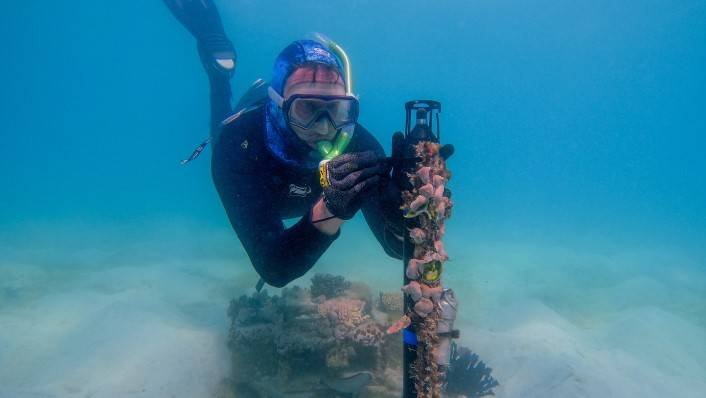Damselfish and snapping shrimp are just a few of the fascinating creatures that inhabit coral reefs and contribute to the unique soundscape of these underwater ecosystems. These sounds, ranging from pops and clicks to chirps and snaps, can provide valuable insights into the health of coral reefs.
Researchers from the Australian Institute of Marine Science (AIMS) have been studying coral reef soundscapes to better understand the biological communities that call these reefs home. By using a tool called the Soundscape Code, they have been able to analyze the amplitude, impulsiveness, periodicity, and uniformity of reef sounds, allowing them to detect subtle differences in soundscapes across different reef habitats.
One interesting finding from their research is that coral reef soundscapes can vary significantly depending on the time of day and the orientation of the hydrophones used to capture the sounds. For example, reefs tend to be noisier at dawn and dusk, with nighttime sounds differing from those heard during the day. Additionally, hydrophones oriented vertically towards the reef showed different sound pressure levels compared to those oriented horizontally, indicating the importance of considering sensor directivity in acoustic data collection.
The researchers also tested different analytical tools and methods for recording and analyzing underwater sound, aiming to standardize monitoring system design for future studies. With ocean sound now recognized as an Essential Ocean Variable, there is a growing need for standardized collection, analysis, and reporting of underwater acoustic data.
One exciting advancement in the field of underwater acoustics is the use of artificial intelligence (AI) to analyze acoustic data. Researchers from the Woods Hole Oceanographic Institution have developed a neural network that can identify fish activity on coral reefs by sound, matching the accuracy of human experts but at a much faster rate. This technology could revolutionize the monitoring of fish populations in real-time, helping to identify species in trouble and respond to environmental disasters more effectively.
Overall, the study of coral reef soundscapes offers a unique window into the underwater world of these vibrant ecosystems. By understanding the sounds produced by damselfish, snapping shrimp, and other reef inhabitants, researchers can gain valuable insights into the health and biodiversity of coral reefs, ultimately contributing to their conservation and preservation for future generations to enjoy.

